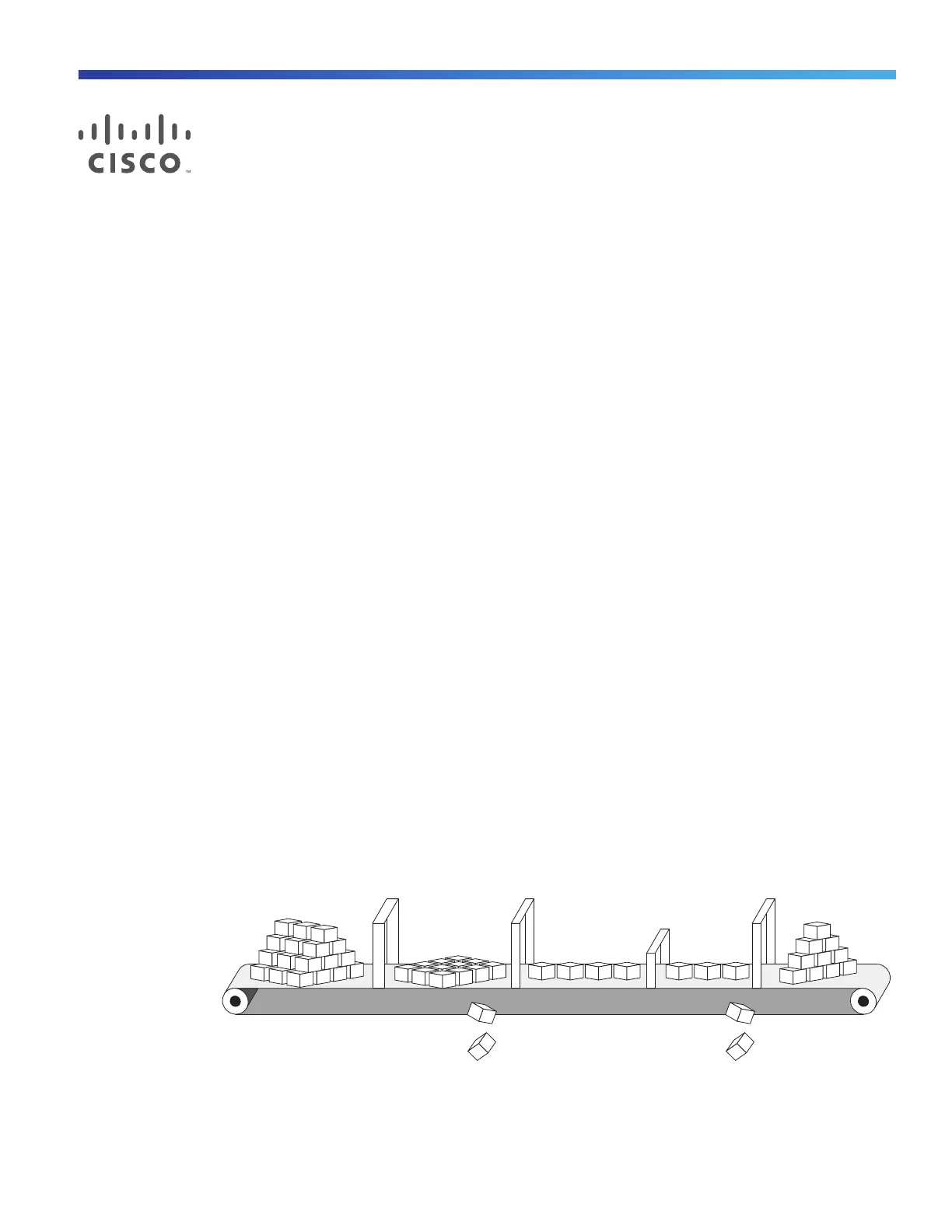571
Cisco Systems, Inc. www.cisco.com
Configuring QoS
This chapter describes how to configure quality of service (QoS) by using the modular QoS command-line interface (CLI),
or MQC, commands on the Cisco IE switch. With QoS, you can provide preferential treatment to certain types of traffic
at the expense of others. When QoS is not configured, the switch offers best-effort service to each packet, regardless
of the packet contents or size. It sends the packets without any assurance of reliability, delay bounds, or throughput.
MQC provides a comprehensive hierarchical configuration framework for prioritizing or limiting specific streams of traffic.
Note: IPv6 QoS is not supported.
For more information about Cisco IOS MQC commands, see the “Cisco IOS Quality of Service Solutions Command
Reference” at this site:
http://www.cisco.com/en/US/docs/ios/12_2/qos/command/reference/fqos_r.html
Understanding QoS, page 571
QoS Treatment for Performance-Monitoring Protocols, page 590
Configuring QoS, page 600
Displaying QoS Information, page 645
Configuration Examples for Policy Maps, page 646
Understanding QoS
Typically, networks operate on a best-effort delivery basis, which means that all traffic has equal priority and an equal
chance of being delivered in a timely manner. When congestion occurs, all traffic has an equal chance of being dropped.
When you configure the QoS feature, you can select specific network traffic, prioritize it according to its relative
importance, and use traffic-management techniques to provide preferential treatment. Implementing QoS in your
network makes network performance more predictable and bandwidth utilization more effective.
Figure 76 on page 571 shows the MQC model.
Figure 76 Modular QoS CLI Model
Basic QoS includes these actions.
Classification Policing Marking Congestion
Avoidance
Queuing
Scheduling
Congestion
Drops
Policer
Drops
141149

